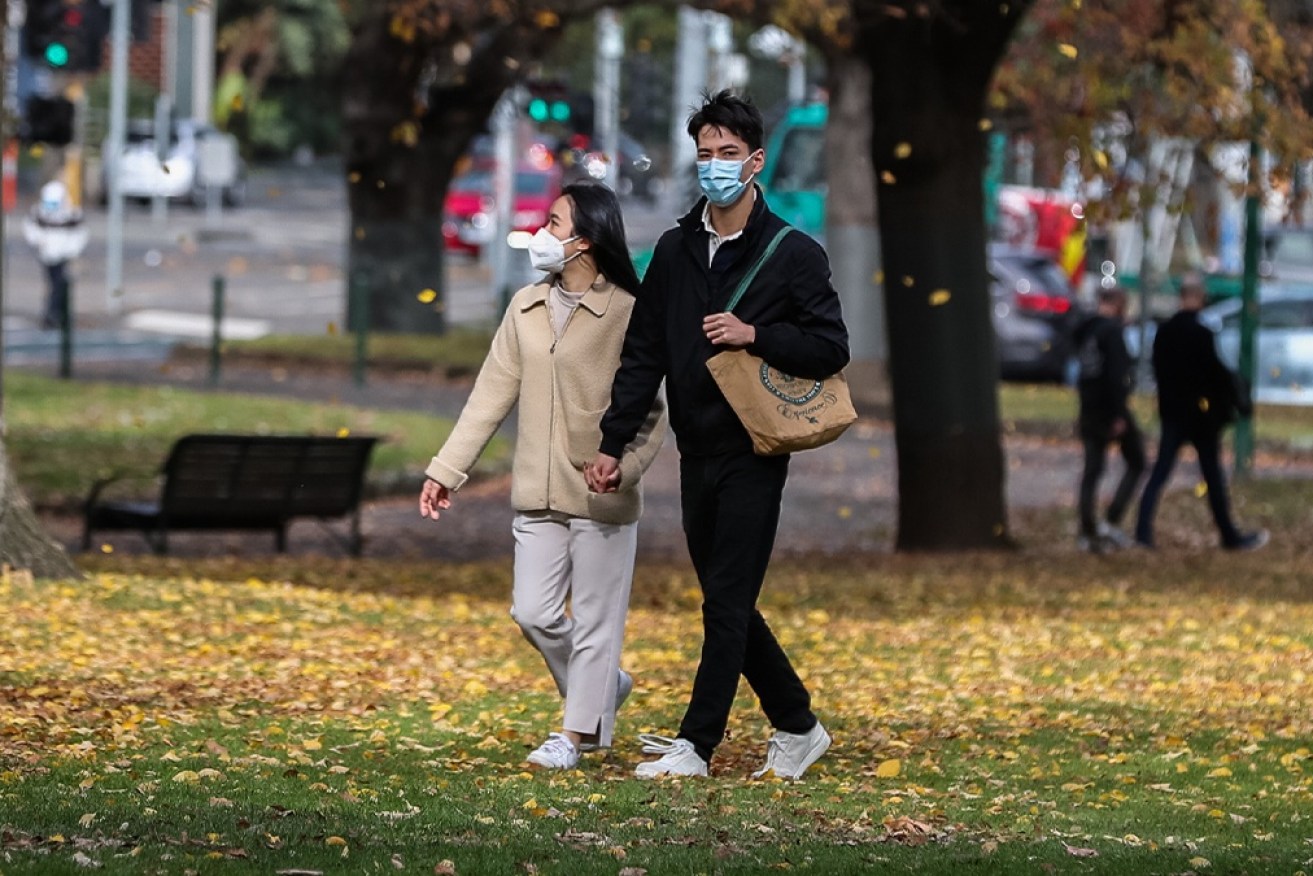Colder weather will likely lead to an uptick in COVID-19 cases, but don’t panic just yet


A national cabinet statement outlined measures in preparation for the "likely co-circulation" of COVID-19 and influenza in winter. Photo: Getty
Experts are advising Australians to prepare for an uptick in COVID-19 cases this winter, but this isn’t something to necessarily panic about.
It comes as the Morrison government released a national cabinet statement, detailing a “nationally consistent” approach to the “likely co-circulation” of COVID-19 and influenza come winter 2022.
Winter is coming
The recent wet weather, especially on the east coast, has brought winter forward and pushed people indoors.
It is the likely cause of the recent spike in local cases, on top of the more transmissible Omicron sub-variant BA.2, which has circulated in Australia since January.
Winter will present a high risk to the community, according to Associate Professor James Trauer, the head of the epidemiological modelling unit for the School of Public Health at Monash University.
“If nothing else, we will be interacting with each other indoors more predominantly, and that’s often a high-risk environment,” he told The New Daily.
But as the national cabinet detailed, this risk doesn’t just apply to COVID-19.
Associate Professor Meru Sheel, an infectious disease epidemiologist at the University of Sydney’s School of Public Health, said it’s likely we will also see an uptick in the circulation of respiratory viruses.
“Particularly in our elderly population and children. A lot of them haven’t had flu exposure in the last few years, so they will be at risk,” she told TND.
“Ensuring that these people are vaccinated against influenza is important as well.”
A ‘sensible’ approach
Associate Professor Trauer said the national cabinet statement is possibly the first with which he has agreed.
Some of the measures include maximising COVID-19 and influenza vaccination coverage and transitioning to no quarantine requirements for close contacts.
Of the latter, Associate Professor Trauer believes this will include some level of surveillance and self-testing.
States are also encouraged to consider mandating influenza vaccination for aged-care workers.
Professor Catherine Bennett, chair of epidemiology at Deakin University, said the government measures are a “sensible” approach that will make living with the virus more sustainable long term.
She said the measures are part of a gradual step towards guiding people to manage their behaviour and, in turn, the community, rather than a rules-based approach.
“I think everyone knows what reduces the risks now. Some people will never follow the rules, others will follow them strictly to do everything they can to reduce the risks,” she said.
“We just have to find the middle ground, and then respond to the immediate local threat that we have. And that is based on how many case numbers we have out there.”
The focus is no longer on COVID-19 variants, but how case numbers translate to the hospitalisation rate and whether we can accommodate it.
“But we still want to manage infection and that is a clear message in the national cabinet statement,” she said.
“We are now in a position where we can really focus on the severe end of the illness and the people who are at risk, and the best way to manage that.”
The first measure listed in the statement focuses on the prevention of severe disease by targeting the most high-risk people for testing and treatments for COVID-19 and influenza.
PCR tests will be prioritised for those at risk of severe disease and those living with someone vulnerable to the risks.
Professor Bennett also agreed with the idea of vaccinating aged-care workers, especially as the pandemic revealed a vulnerability in close-quartered communities.
Vaccinating aged-care workers can help avoid dealing with two different outbreaks in one facility.
The ‘crystal ball question’
After the Omicron variant tore through the festive season, the natural question is if we’ll see another variant this winter.
It is possible, but Associate Professor Sheel said there’s no way of knowing at this stage.
Variant pressure comes from settings where there is a low vaccine uptake or availability. That can lead to a circulation of the virus and mutations in the virus cause new variants.
“It’s like a crystal ball question,” Associate Professor Sheel told TND.
“But if there is another variant, we now understand a little better how these work because of what we saw with Delta and Omicron.”
If no new variant emerges this winter, Associate Professor Trauer believes it is unlikely that we will see a wave as big as what we saw with Omicron over the summer.
“I suspect the winter wave will be considerably smaller than what we’ve already been through. So with more sensible measures, we should be able to manage it a lot better,” he said.








